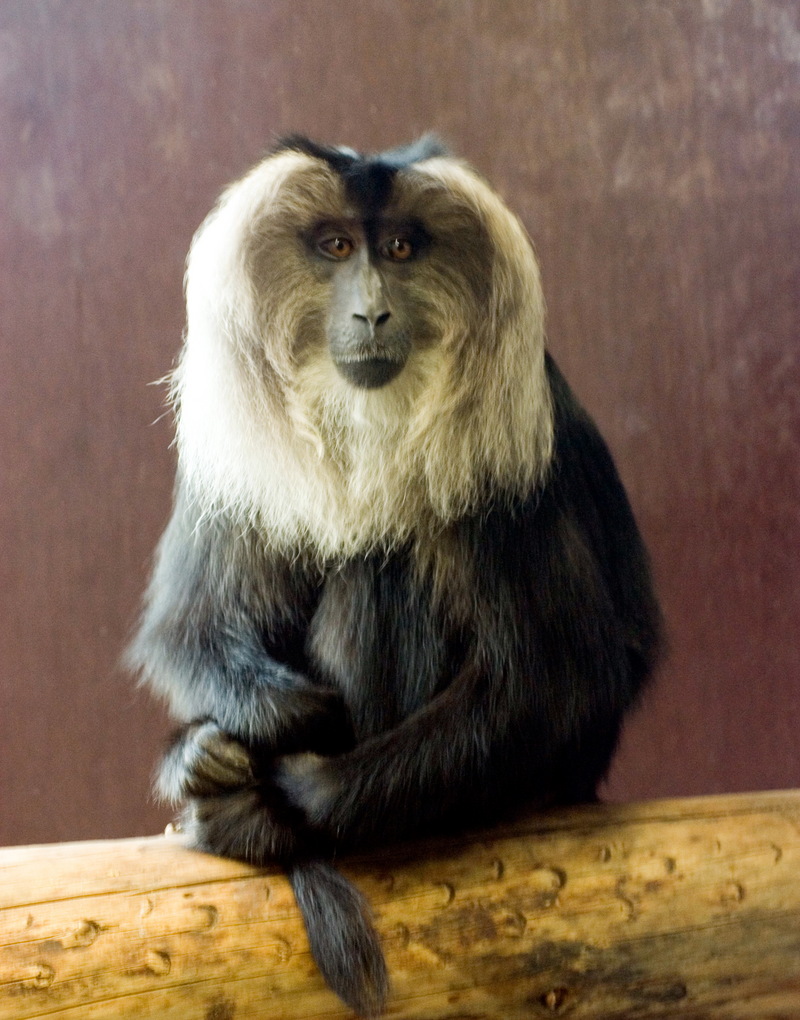| 새로운 사진 | 신문속의 동물소식 | 신기한 동물이야기 | 동물의 소리 | 동물동화상 | 사진 올리기 | 사진 저작권 | English |
|---|
| 재미있는 동물사진 | 괴수/괴어/엽기 동물사진 | 동물이름사전 | 동물목록 | 바깥고리 | 창고입구 | 똑똑누리집 |
|---|
| 이미지 정보 | Original File Name: Liontail_Macaque_in_Bristol_Zoo-Lion-tailed Macaque (Macaca silenus).jpg Resolution: 2008x2560 File Size: 1740501 Bytes Date: 2007:10:06 20:40:56 Upload Time: 2007:10:06 20:44:55 | |
| 올린이 | 이름 (메일주소): Unknown | |
| 사진 제목 | Lion-tailed Macaque (Macaca silenus) - Wiki | |
 |
| Email : 카드 | 올린이 | 운영자 사진삭제 정보수정 Admin |
| 설명 | Lion-tailed Macaque (Macaca silenus) - Wiki
Lion-tailed Macaque
The Lion-tailed Macaque (Macaca silenus) is an Old World monkey that lives only in the Western Ghats of South India. Physical Characteristics The fur of the Lion-tailed Macaque is dark-brown or black. Its outstanding characteristic is the silver-white mane which surrounds the head from the cheeks down to its chin, which gives this monkey its German name of "Beard Ape". The hairless face is black colored. With a head-to-tail length of 45 to 60 cm and a weight of 3 to 10 kg it ranks among the smaller macaques. The tail is medium length with a length of approximately 25 cm and is a black tuft at the end, similar to a lion's tail. The males tail-tuft is more developed than that of the females. Gestation is approximately six months. The young are nursed for one year. Sexual maturity is reached at four years for females, six years for males. The life expectancy in the wild is approximately 20 years, while in captivity up to 30 years. Behavior The Lion-tailed Macaque is a diurnal rain forest dweller. It is a good climber and spends a majority of its life in the upper canopy of tropical moist evergreen forests. Unlike other macaques, it avoids humans. In group behavior, it is much like other macaques: it lives in hierarchical groups of usually ten to twenty animals, which consist of few males and many females. It is a territorial animal, defending its area first with loud cries towards the invading troops. If this proves fruitless, it brawls aggressively. Lion-tailed macaque behaviour is characterized by typical patterns such as arboreal living, selectively feeding on a large variety of fruit trees, large inter-individual spaces while foraging, and time budgets with high proportion of time devoted to exploration and feeding. The Lion-tailed Macaque primarily eat indigenous fruits, leaves, buds, insects and small vertebrates in virgin forest but can adapt to rapid environmental change in areas of massive selective logging through behavioural modifications and broadening of food choices to include fruits, seeds, shoots, pith, flower, cone, mesocarp, and other parts of many non-indigenous and pioneer plants. Population According to the IUCN, only approximately 2,500 of these animals live scattered over several areas in Karnataka, Kerala and Tamil Nadu. The Lion-tailed Macaque ranks among the rarest and most threatened primates. Their range has become increasingly isolated and fragmented by the spread of agriculture and tea, coffee, teak and cinchona, construction of water reservoirs for irrigation and power generation, and human settlements to support such activities. They don't live, feed or travel through plantations. Destruction of their habitat and the fact that they avoid human proximity, has led to the drastic decrease of their population. During 1977 to 1980, public concern about the endangered lion-tailed macaque became the focal point of Save Silent Valley, India's fiercest environmental debate of the decade. During 1993 to 1996, fourteen troops of lion-tailed macaque were observed in Silent Valley National Park, Kerala, one of the most undisturbed viable habitats left for the lion-tailed macaque. A self-sustainable single population of 32 groups of lion-tailed macaques occurred in Sirsi-Honnavara, Karnataka, the northernmost population of the species. A local census concluded in 2007, conducted in the Theni District of Tamil Nadu, put their numbers at around 250, which was considered encouraging, because till then, there had not been any records of Lion-tailed Macaques in that specific area. Many zoos take part in breeding programs which help to secure the survival of this species. 368 of these Macaque are reported to live in zoos. http://en.wikipedia.org/wiki/Lion-tailed_Macaque
| |||
| 저작권 정보 | 사진의 저작권은 원저작자에게 있습니다. 동물그림창고는 동물관련 사진을 전시할 수 있는 공간만을 제공합니다.사진을 사용하고자 할 경우에는 저작권자와 협의하시기 바랍니다. |
|
|
|
| |||||||
| CopyLeft © since 1995, 동물그림창고. All rights may be reserved. | ||||||||
Stats